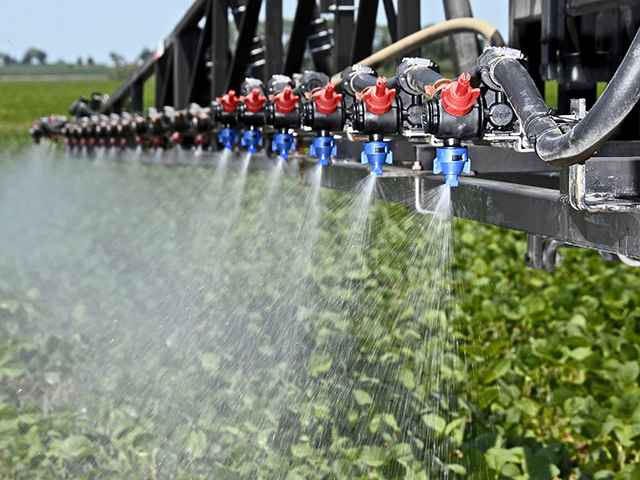Dicamba Cutoffs Loom
Keep Dicamba Cutoff Dates in Mind When Replanting Soybeans
ROCKILLE, Md. (DTN) -- Between a Mother's Day freeze and recent flooding, many soybean acres in the Midwest may need to be replanted in the weeks to come.
Growers with dicamba-tolerant Xtend soybeans should keep in mind the tight windows for legal applications, cautioned University of Illinois weed scientist Aaron Hager. Many growers face application limits from both the federal label and from state cutoff dates.
"If you completely replant a dicamba soybean field right now, you may get a new 45-day window to spray dicamba from the federal label; but in Illinois, you also have to remember that June 20 is the state-mandated last day of dicamba applications in soybeans," Hager said.
The Illinois Department of Agriculture also instituted a temperature cutoff for dicamba applications of 85 degrees, which is still in place. See more here: https://www2.illinois.gov/….
Indiana farmers also face a June 20 cutoff. The Office of Indiana State Chemist hopes the new limit this year will cut the state's dicamba injury complaints -- which surged to a record 178 last year -- in half in 2020, said David Scott, pesticide program administrator for the agency.
Although both states have experienced major flooding and freezing temperatures in the past two weeks, neither pesticide regulatory agency is open to moving or altering the cutoff date, state officials told DTN.
"The Illinois Department of Agriculture set the 2020 dicamba restrictions after careful consideration following the 2019 growing season," said Krista Lisser, public information officer for the department. "We have every intention of holding dicamba applications to the June 20 cutoff date."
P[L1] D[0x0] M[300x250] OOP[F] ADUNIT[] T[]
Last year, the Illinois Department of Agriculture rolled a June 30 cutoff date for dicamba applications to July 15 to accommodate planting delays. Dicamba injury reports soared in the state, with the bulk of off-target injury coming after the original cutoff date, as the state's injury complaints rose to a record 723 reports. (See more here: https://www.dtnpf.com/…)
That experience was eye-opening for surrounding states, said Indiana's Scott.
"Our cutoff date is pretty much set in stone," he told DTN. "It's based on risk. We feel the benefits portion of the equation has already been given plenty of consideration by EPA and others to get us to this point."
Data on temperature, humidity and the growth stages of nontarget vegetation were the basis for Indiana's cutoff date, he said. "The factors that went into that decision haven't changed," he said. "And everybody knew what the cutoff date was going into this season."
Other state cutoff dates include Minnesota (June 20), North Dakota (June 30) and South Dakota (June 30). Arkansas farmers run into their state's limit on dicamba applications on May 25.
With state agencies unlikely to budge on these cutoffs, some soybean farmers need to have a backup plan for weed control, Hager said.
Even if soybean fields are fully replanted this weekend and next week, they will have less than a month of growth before the Illinois, Indiana and Minnesota cutoff dates take effect.
"We'll have soybeans out of the ground, but in 30-inch rows, you're not going to have canopy closure that quickly," Hager said. "One suggestion is that in these later applications, growers might want to consider adding a residual herbicide to the tank."
Early planted soybeans that survived the cold and the flood could also run out of a time for dicamba applications, he added. Soybean fields planted on April 6, for example, have already hit the 45-day post-planting limit on the federal label of the in-season dicamba herbicides Engenia, XtendiMax, FeXapan and Tavium.
Regardless of when those soybeans actually emerged and started growing, your application window is tied to that original planting date, Hager noted.
"If you're running into your 45-day post-planting application limit in mid-May, there is still a lot of the season left," he said. "We have waterhemp just now starting to come up, and you can't count on canopy closure to protect you."
See more from Hager here: http://bulletin.ipm.illinois.edu/….
See more on what to know before spraying dicamba this year from DTN here: https://www.dtnpf.com/….
Emily Unglesbee can be reached at Emily.unglesbee@dtn.com.
Follow her on Twitter @Emily_Unglesbee.
(c) Copyright 2020 DTN, LLC. All rights reserved.






